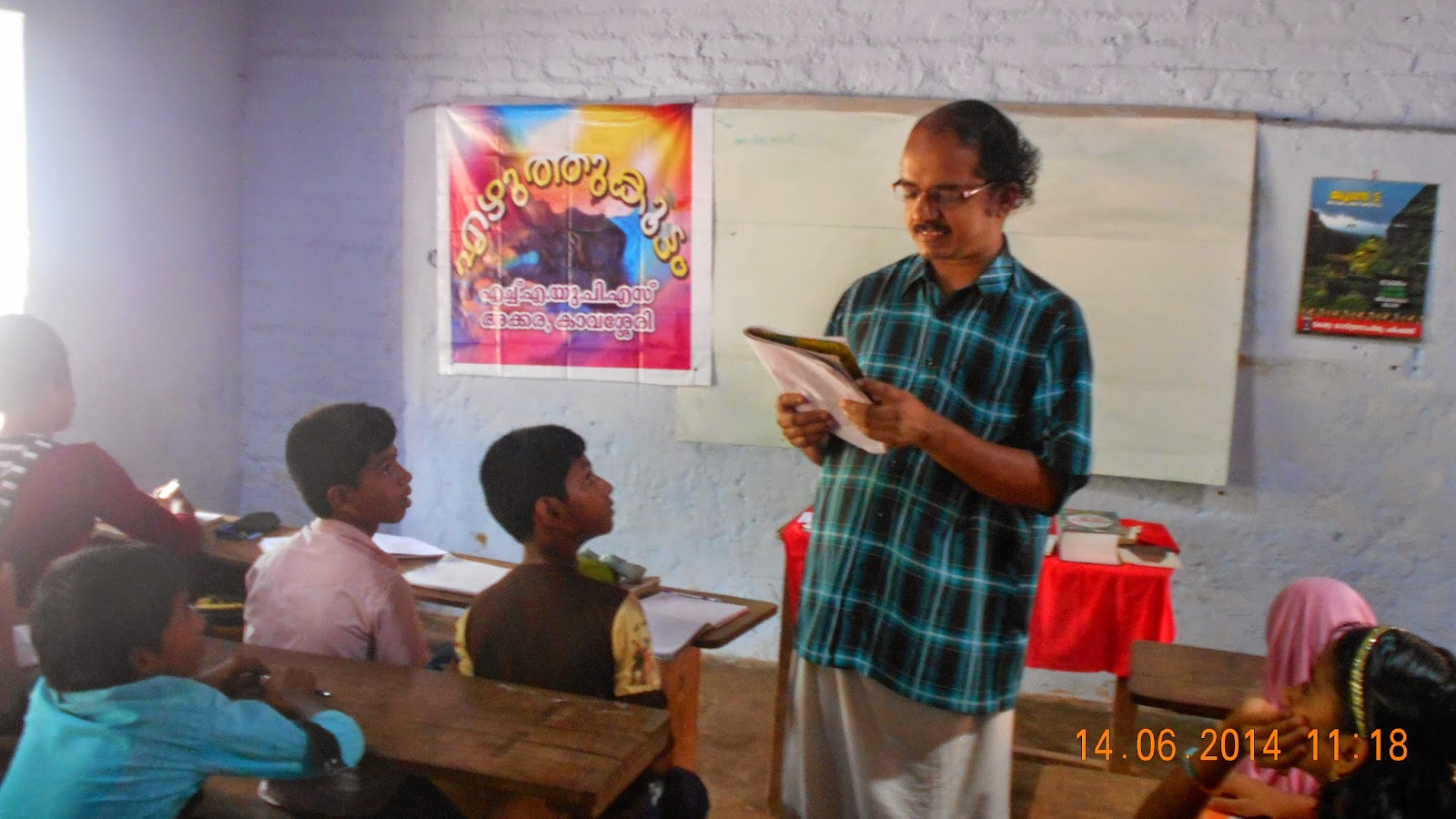Teacher begins with a friendly interaction.
How was your vacation?
How did you spend? The places you went…?
When did you get up today morning?
What did you eat ?
Let the students write about this.. Some of them are allowed to present what they have written..
Which of these food items are obtained from plants?
Observe the picture and find out the plant parts used as food.
How can we group the plants based on the plant parts used as food…?
Leaf
Root
Fruit
Seed
Do we use stem or flower of any plant as food..?
The children are allowed to collect the names of plant parts and form a table. They present the list. The teacher may add suitably.
Teacher consolidates.
Various plant parts are used for food
The edible part is different in different plants.
Do all the plants have edible parts?
What are the other uses of plants?
Teacher leads a short discussion.
Some of the children respond.
Teacher asks the children to write down individually.
They are allowed to present what they have written.
Teacher records them on BB.
The children may collect data from school medicinal garden.
Teacher consolidates with the help of picture reading and discussion.
The children are asked to find out as many uses of plants . Let them record in their science diary.
All animals including man depend plants for food.
ü Don’t the plants need food?
ü Where do plants get food?
ü What are the substances that plants need for preparing food?
The children are asked to read the matter PHOTOSYNTHESIS given in the TB.
Let them familiarize the main ideas related to Photosynthesis.
Some points are given:
ü The process by which plants prepare food.
ü The substances needed.
ü The importance of leaves.
ü The food prepared by the plants.
ü Where is it stored?.
The children present the main ideas related to Photosynthesis. Teacher consolidates. The consolidated ideas are recorded in the science diary.
We have learnt that carbon dioxide is necessary for Photosynthesis.
ü Where is carbon dioxide present around us.
ü How do plants get this ?
The children write the guess individually.
Some of them are allowed to say and explain their guess.
Let’s find out.
The information given in the textbook is discussed first.
Then the children observe the stomata through Microscope.
Peal of Colacasia or Beetle leaf is taken and stained.
Place the leaf on glass slide using a point brush
Then observed through Microscope
ü What do you see?
ü Don’t you see small pores ?
These are called stomata.
The children draw the stomata and guard cells they have observed.
They are asked to record the experiment note on science diary. Teacher shows the video related to the functioning of stomata.
We know that sunlight is necessary for photosynthesis.
Observe the plants around.
ü Where does sunlight fall most on plants ? Which part gets more sunlight?
Write down your observation.
ü How the arrangement of leaves helps to get maximum sunlight?
The children observe the plants and collect information regarding the arrangement of leaves.
We have seen that how do plants obtain carbon dioxide and sunlight for photosynthesis.
You have learnt that green plants contain chlorophyll.
ü How do we identify chlorophyll?
ü Do all plants contain chlorophyll?
ü Does red amaranths contain chlorophyll?
Children write their guess.
Designs an experiment:
Materials needed.
Procedure
Recording….All steps are discussed and finalized.
Designing and Executing of experiment are done in groups.
Presntation in groups.
General presentation.
Observation and inference are presented. The information given in the TB is discussed. Then teacher consolidates.
The children examine the picture given in the TB. The following ideas are consolidated.
Photosynthesis and respiration are two major life processes.
Plants absorb carbon di oxide for photosynthesis and gives out Oxygen.
Plants and animals take in Oxygen and give out Carbon dioxide during respiration.
Thus these two life processes help to maintain the balance of Oxygen and Carbon dioxide in atmosphere.
MODULE :2
Duration : 3 periods
Main ideas : Epiphytes , Parasites , Saprophytes
Materials : Hand lens , Decayed bread , ICT equipments.
The children are allowed to read the diary note written by Safia.
ü Where do the plants get water and other materials from ?
ü How can they grow without soil?
ü Can you mention more plants like these?
ü What do we call them ?
The children read and discuss the information about Vanda.
They observe its parts
Teacher consolidates.
The children record in the science diary.
The teacher continues the discussion.
Do the epiphytes cause any harm to the host plants?
The children respond.
Observe the Loranthus. How does it affect the host plant?
Observe loranthus and cuscuta and find out the differences..
After reading and discussion, the main ideas regarding parasitic plants are consolidated and recorded in the science diary.
We have seen that epiphytes absorb water and materials from air.
Parasites depend on the host plants for food.
Let’s see some other types.
Teacher asks the children to observe the rhizopus on decayed bread using hand lens.
The children observe.
They draw the picture .
Reads the information about saprophytes.
Records in the science diary.
| 













